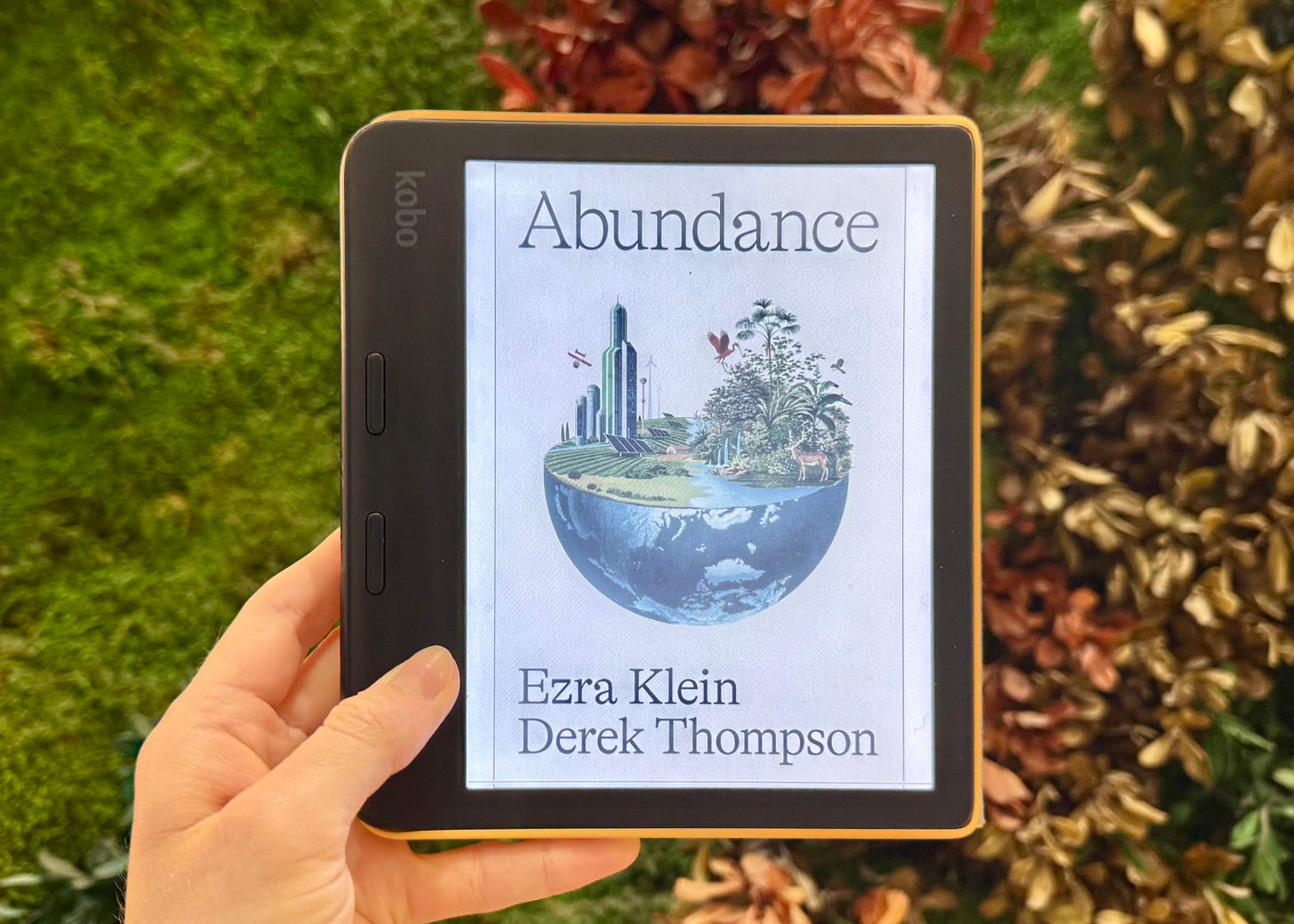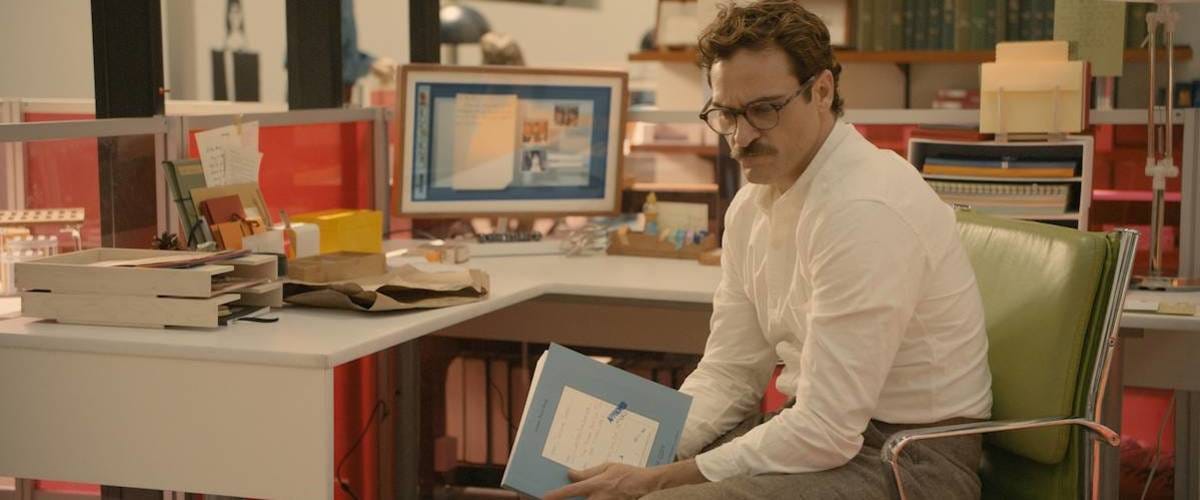TCC #62 — Should climate leaders embrace 'abundance'?
Could we get more people on the climate bandwagon by talking about a future of more, not less?
You open your eyes at dawn and turn in the cool bedsheets. A few feet above your head, affixed to the top of the roof, a layer of solar panels blinks in the morning sun. Their power mixes with electricity pulled from several clean energy sources—towering wind turbines to the east, small nuclear power plants to the north, deep geothermal wells to the south. Forty years ago, your parents cooled their bedrooms with joules dredged out of coal mines and oil pits. They mined rocks and burned them, coating their lungs in the byproducts. They encased their world—your world—in a chemical heat trap. Today, that seems barbaric. You live in a cocoon of energy so clean it barely leaves a carbon trace and so cheap you can scarcely find it on your monthly bill.
The year is 2050.
So begins the introduction of Ezra Klein and Derek Thompson’s new book, Abundance. If you haven’t seen this on shelves yet, I wrote a recap/review for general audiences here.
But there’s so much to unpack in this book as it relates to climate.
Let’s start with the framing: abundance. More. Plenty for everyone.
I think that’s a pretty smart play by the authors. So many climate activists (ourselves included) are out there talking about degrowth, about winding things down, about stopping and blocking and reversing. You have to wonder what effect this kind of talk is having on the average person who already feels like they don’t have enough, like their slice of the pie is too skinny, like the previous generations and the millionaire and billionaire classes got to benefit from the errors of the past and now want to halt everything so nobody else can benefit. (This is not just a conspiracy theory, by the way — in many ways it’s the reality. Just take the liberal zoning laws blocking new housing developments that Klein and Thompson detail in the book.)
I have to believe this is why MAGA messages appeal to so many. Trump knew people felt ripped off, and he leaned into it. Of course, he leaned into it in entirely the wrong way, but the point is that he acknowledged it. Climate activists often prefer to blame people for existing rather than acknowledge that they may actually be struggling too. Or criticise them for wanting more — or the same — as their parents had.
But there is so much about a net-zero or climate-positive future that could represent ‘more’ rather than ‘less’ if we framed it that way. Cheap (or even free) energy for all! Clear skies! Clean rivers! Lightning-fast free transport! No paying for gas!
I remember being captivated by the film 2040 when it came out. Finally, a climate documentary with a hopeful vision. I wonder if this is also the reason that Her is my favourite movie: the future it portrays is, yes, dystopian (he’s in love with his computer, after all), but also beautiful and clean and colourful — not like most of the dark apocalyptic future movies we’re accustomed to.
But on that note, we can’t achieve the climate-mitigated and climate-adapted future we need without also building a lot more than we have now. Most of you are in the corporate climate world, so you probably already accept this. But the history of the environmental movement, as Klein and Thompson profile in the book, has been mostly about blocking new developments in the name of preserving environmental integrity. These were important moves, but we need to do more than just block now. We need to build — fast.
A true net-zero transition will require one of the biggest engineering and manufacturing efforts in history. We need solar panels, wind turbines, nuclear power plants and waste facilities, high-speed rail, inner city transportation, electric car charging stations, direct air capture, some kind of solution for aviation — the list is endless.
And that’s just mitigation! The authors don’t even get into everything we’d need to build in order to adapt to the realities of climate change that are already on their way, like rising sea levels and natural disasters.
A fair and climate-mitigated and climate-adapted future requires more than just stopping negative developments. We can’t block or de-growth our way there. We’ll have to start saying ‘yes’ more.
But often, the liberal governments that are most favourable to the climate agenda are the worst culprits for getting things built faster and at scale. In their attempts to block abuses of government power or stop new developments that might cause environmental harm, liberals have hobbled the very government capacity we now need to build out the infrastructure for a net-zero future.
There’s so much to unpack here and so much to explore, so I can’t recommend this short book enough for climate enthusiasts, particularly those who need a dose of optimism or a new vision for the future.
I’ll leave it here for now, but I’d love to know what you thought of the book, if you’ve read it.





